Levantada Turca con Snatch / Kettlebell Turkish Get Up + Snatch
3
About :
Saludos a toda la comunidad @aliento.
Hoy les traigo la Levantada Turca, también conocida como TGU por sus siglas en inglés.
No es la levantada turca tradicional, le he agregado el Snacth para aumentar su dificultad e intensidad.
Antes de describir su ejecución, les hablaré un poco de este conjunto de patrones diseñados para mejorar la fuerza de la zona media y la estabilidad de gran cantidad de articulaciones, sobretodo del hombro que se lleva gran parte del trabajo.
Según nuestros amigos de https://g-se.com/levantada-turca-tgu-con-kettlebells-la-calidad-de-movimiento-como-limitante-de-la-fuerza-bp-u5898bb15004b2
La levantada turca es un ejercicio ampliamente conocido en el mundo de las kettlebells. En principio fue popularizado en la década pasada en Estados Unidos por Steve Maxwell y Pavel Tsatsouline, y luego perfeccionado por diferentes entrenadores como Gray Cook, Mark Cheng y otros kinesiólogos, rehabilitadores y especialistas del entrenamiento funcional.
Si bien no se conoce exactamente su origen, se estima que los antiguos levantadores lo usaban, con mucha sabiduría, como ejercicio de sostén y fuerza.
La premisa básica del TGU (Turkish Get Up o levantada turca) es que las diferentes posiciones generan situaciones de déficits para la fuerza (por inestabilidad, pocos apoyos o ángulos de ejecución), por lo que la calidad de nuestro movimiento, la movilidad y la estabilización se vuelven requisitos fundamentales para poder ejecutar la levantada. En este escenario altos valores de fuerza no serán suficientes para lograr el objetivo, la estabilidad, coordinación y movilidad serán requeridas todo el tiempo. La frase más adecuada para resumir este concepto es que “sos tan fuerte como la calidad de tu movimiento te lo permita”.
Bajo la consigna de que la calidad del movimiento va primero, hemos podido corroborar en entrenamientos, sujetos que poseían un press de parado extraordinario pero no podían replicar ni en un 20% esa misma fuerza en press desde una posición en donde requerían una mayor estabilidad de la pelvis para la ejecución (octava posición arrodillado del TGU).
El TGU demuestra, entre otras cosas, que sin la presencia de estabilidad será muy difícil expresar valores de fuerza. Sin una buena estabilidad la fuerza no se presenta o lo hace con compensaciones que podrán devenir en resultados negativos para nuestra performance y estructura.
Si a la fuerza que ya existe se le sumaran todos estos valores positivos de estabilidad y movilidad, nos encontraríamos ante ventajas mecánicas para mejorar los valores de ésta.
Vamos a encontrar diferentes maneras de hacer TGU tanto en los profesores que enseñan esta técnica como en libros o en internet.
Beneficios.
El principal beneficio que nos da la ejecución de este ejercicio es que la carga va a caer sobre tres ejes diferentes: frontal, lateral y axial.
La pesa va a estar al frente nuestro, sobre nuestro lateral y por arriba nuestro, todo esto mientras el brazo se encuentra prácticamente en la misma posición, recibiendo el hombro diferentes estímulos de fuerza, estabilidad, movilidad y flexibilidad. Es por esto que muchos terapeutas lo han usado y recomendado para diferentes tipos de rehabilitación de hombro. Este ejercicio trabaja sobre diferentes déficits clásicos que se presentan en la mayoría de los practicantes.
- Movilidad torácico-dorsal: Quizás una de las más subestimadas de las movilidades. Por lo menos un 70% de las posturas de la levantada exige, estimula y expone fallas en este segmento.
- Estabilización lateral pelvis. Otro déficit que se presenta sobre todo cuando tenemos el peso sobre un pie más que sobre el otro.
- Estabilidad de la escápula y movilidad del hombro: Constante en el TGU y, como mencionamos se solicita en diferentes planos.
- Déficits de fuerza: Se presentarán de acuerdo a nuestras restricciones de movilidad, equilibrio y calidad de movimiento en mayor o menor medida, según la postura.
- Movilidad de la cadera: Por lo menos dos fases de la levantada trabajan exhaustivamente sobre la flexión/extensión de las caderas, aislándola de indeseables movimientos en la zona lumbar.
- Activación del núcleo en todos los planos: Prácticamente en todo momento el núcleo será requerido, sobre todo en las posiciones con pocos apoyos.
- Asimetrías: El hecho de trabajar ambos lados nos ayudará a detectar si de uno somos más estables o más fuertes o menos
móviles, lo que nos dará una visión global de nuestro estado.
Además de detectar estos problemas, la misma levantada ayuda a corregirlos y luego a potenciar las habilidades que estaban ausentes, lo que la convierten en la gran herramienta de evaluación y corrección en el practicante de kettlebell.
“El TGU es un ejercicio autolimitante, también llamados “Ejercicios Naturalmente Correctos”, ésta denominación la introduce Gray Cook en su libro Movement, aludiendo a una categoría de ejercicios que requieren de una gran conciencia corporal al ejecutarlos, todo lo opuesto al concepto del ejercicio realizado en una máquina. Los ejercicios autolimitantes (self-limiting exercises) demandan atención plena del ejecutante, alineación, equilibrio y control, de otra manera sería imposible su realización y ésta es la clave del asunto”.
“En cuanto el TGU, resulta un excelente activador tridimensional del core, recomendado nada menos que por el Dr. Stuart McGuill”.
Sensei Juan Carlos Fuentes.
Entrenador Funcional.
Director de Deportes del Municipio Simón Rodríguez.
Greetings to the entire community @aliento.
Today I bring you the Turkish Lift, also known as TGU for its acronym in English.
It is not the traditional Turkish lift, I have added the Snacth to it to increase its difficulty and intensity.
Before describing its execution, I will tell you a little about this set of patterns designed to improve the strength of the middle zone and the stability of a large number of joints, especially the shoulder, which takes much of the work.
According to our friends at https://g-se.com/levantada-turca-tgu-con-kettlebells-la-calidad-de-movimiento-como-limitante-de-la-fuerza-bp-u5898bb15004b2
The Turkish lift is a widely known exercise in the world of kettlebells. It was first popularized in the past decade in the United States by Steve Maxwell and Pavel Tsatsouline, and later perfected by different trainers such as Gray Cook, Mark Cheng and other kinesiologists, rehabilitators and functional training specialists.
Although its exact origin is not known, it is estimated that ancient lifters used it, with great wisdom, as an exercise for support and strength.
The basic premise of the TGU (Turkish Get Up) is that the different positions generate situations of strength deficits (due to instability, few supports or execution angles), so the quality of our movement, mobility and stabilization become fundamental requirements to be able to execute the lift. In this scenario high force values will not be enough to achieve the objective, stability, coordination and mobility will be required all the time. The most appropriate phrase to summarize this concept is that “you are as strong as the quality of your movement allows you to be”.
Under the slogan that the quality of the movement comes first, we have been able to corroborate in training, subjects who had an extraordinary standing press but could not replicate even 20% of that same force in pressing from a position where they required greater stability of the pelvis for the execution (eighth kneeling position of the TGU).
The TGU demonstrates, among other things, that without the presence of stability it will be very difficult to express force values. Without good stability, strength does not appear or it does so with compensations that could lead to negative results for our performance and structure.
If all these positive values of stability and mobility were added to the force that already exists, we would find ourselves facing mechanical advantages to improve its values.
We are going to find different ways to do TGU both in the teachers who teach this technique and in books or on the internet.
Benefits.
The main benefit that the execution of this exercise gives us is that the load will fall on three different axes: frontal, lateral and axial.
The weight will be in front of us, on our side and above us, all this while the arm is practically in the same position, the shoulder receiving different stimuli of strength, stability, mobility and flexibility. This is why many therapists have used and recommended it for different types of shoulder rehabilitation. This exercise works on different classic deficits that occur in most practitioners.
- Thoracic-thoracic mobility: Perhaps one of the most underestimated of the mobilities. At least 70% of the postures of the lift demand, stimulate and expose faults in this segment.
- Lateral pelvic stabilization. Another deficit that occurs especially when we have the weight on one foot more than on the other.
- Stability of the scapula and mobility of the shoulder: Constant in the TGU and, as we mentioned, it is requested in different planes.
- Strength deficits: They will appear according to our mobility, balance and quality of movement restrictions to a greater or lesser extent, depending on the posture.
- Hip mobility: At least two phases of the lift work exhaustively on the flexion/extension of the hips, isolating it from undesirable movements in the lower back.
- Activation of the core in all planes: Practically at all times the core will be required, especially in positions with few supports.
- Asymmetries: The fact of working both sides will help us to detect if one of us is more stable or stronger or less
phones, which will give us a global view of our state.
In addition to detecting these problems, the same lift helps correct them and then enhance the skills that were missing, which makes it a great evaluation and correction tool in the kettlebell practitioner.
"The TGU is a self-limiting exercise, also called "Naturally Correct Exercises", this denomination is introduced by Gray Cook in his book Movement, alluding to a category of exercises that require great body awareness when executing them, quite the opposite of the concept of exercise made on a machine. The self-limiting exercises (self-limiting exercises) demand full attention of the performer, alignment, balance and control, otherwise it would be impossible to perform them and this is the key to the matter”.
“As for the TGU, it is an excellent three-dimensional activator of the core, recommended by none other than Dr. Stuart McGuill”.
• El logotipo de La Baticueva Funcional es de mi propiedad elaborado en Adobe Photoshop.
• La grabación fue realizada con mi celular Redmi X40 Gaming
• La Música utilizada es Playlist de Spotify
• Traducción por Google Translate.
Tags :
Their limit for today is $0!

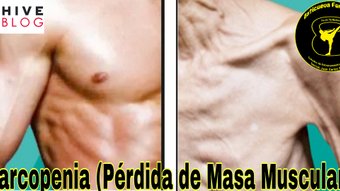
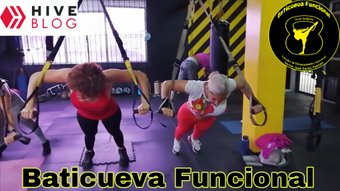
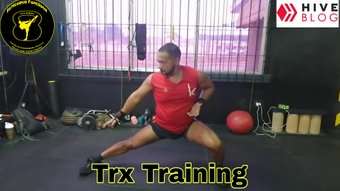






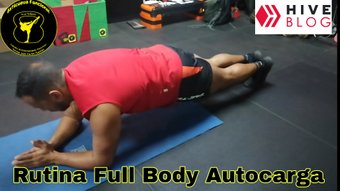
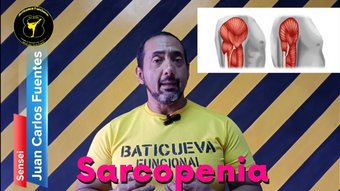





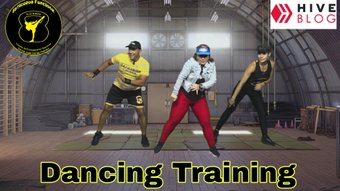
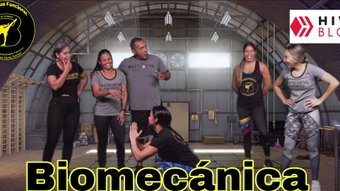
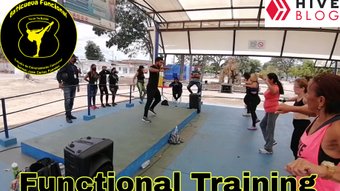









Comments:
Reply:
To comment on this video please connect a HIVE account to your profile: Connect HIVE Account